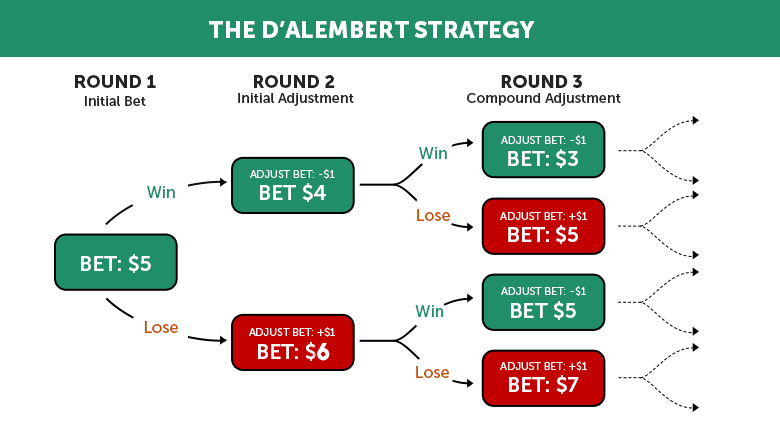Betting has always been something folks enjoy — it’s been part of life for ages. Whether it’s horses or football, this world just keeps growing. Now it’s huge. There are a bunch of ways people try to make sense of it, and one that keeps popping up is this D’Alembert method. Below is a breakdown of how it works and how someone might go about using it.
Introduction
People get into betting because it’s fun — sometimes exciting too. But it’s not always easy. If you just throw money around, it can go bad real quick. That’s why some try different systems. One of those is D’Alembert. It’s pretty straightforward and meant to help you hold on to your cash better, or maybe even come out ahead. What follows is the idea behind it, and how someone might actually use it.

What is the D’Alembert Strategy?
D’Alembert is something folks use a lot when they play games like roulette or blackjack — stuff where the odds feel kind of even. The idea is easy. When you lose, you bet a bit more next round. When you win, you cut back. That’s all.
So say you start with TZS 10. You lose, now you bump it to TZS 20. Win after that? Then drop it back by the same amount. And on it goes.
The thinking here is, after a loss you’ve got better odds the next round — or at least that’s the belief. So you go up in size when things don’t go your way, hoping to grab it back. Then if you get a win, you slow down, just to be safe.
How Does the D’Alembert Strategy Work?
This whole system is kind of built around the idea that your wins and losses might balance out. Like, if you’re down now, maybe you’re due for something good. So you increase after you lose, then cut back when you win — trying to ride that wave without drowning in it.
It’s not hard to follow. Anyone just getting into this kind of thing can probably pick it up fast. It doesn’t promise a win, but at least you’ve got some structure for how you bet.
Advantages of the D’Alembert Strategy
What makes this one nice is, well, it’s not too complicated. You don’t need to sit with a calculator or know math like a professor. You just go up and down by small steps depending on what just happened.
And since you’re not throwing big amounts all at once, it’s a bit safer for your wallet. If you use it right, it might help you stay in the game longer and not lose as fast.
Disadvantages of the D’Alembert Strategy
Still, nothing’s perfect. One issue here is that it assumes losses turn into wins, and wins into losses — like they take turns or something. But that’s not always how things go. You could keep losing and be stuck increasing over and over.
Also, this strategy doesn’t have any kind of guarantee. You follow it to the letter, you might still lose. That’s just how betting is sometimes.
And then there’s the part where some people don’t know when to stop. They chase it too far, thinking one more round will fix everything. But that’s when the trouble gets worse. You’ve got to set a limit — like, “Okay, this much and no more” — and stick with that no matter what.
How to Use the D’Alembert Strategy
If you want to give this strategy a shot, there’s a few steps. First, choose your starting bet. Don’t go big. Pick something you’re fine with losing. Because, yeah, that can happen.
Next, decide your step size. That’s just the amount you’ll go up or down by. If you’re starting at TZS 10, you could set your unit at TZS 1. So lose? Next bet is 11. Win after that? Drop back to 10. It keeps shifting like that.

Once you’ve got those two things set — your base and your unit — then just follow it along. Keep going till either you hit the number you wanted to win or you’ve lost enough and need to stop. No funny business in between.
Conclusion
This D’Alembert thing is pretty simple. It might not turn you into some kind of expert, but it helps you stay a bit more in control of your bets. Great for folks just starting out. No heavy thinking needed, just follow the pattern.
Still, it’s betting. So don’t bet money you can’t lose. Use this strategy to keep things calm, and you might enjoy the ride more.
